Summary
We need to measure tree and wood properties (particularly those of sawn timber) in order to meet our overall objective of understanding the potential of the national forest resource. We can do this through traditional methods, but technological developments mean that these may no longer be the most accurate or efficient methods. It is important therefore to keep an eye on the state-of-the-art technologies, or even pioneer methods, to measure properties that are vital for commercial exploitation. Below is a summary of what we are currently doing.
Knot Measurement & Modelling Using CT Scanning
Developing methods to predict knot size and knot shape within trees based on their external characteristics.
Rapid cross-sectional measurements of wood stiffness
Investigating the whether we can incorporate ultrasonic and image analysis methods to assist our studies of mechanical stiffness across tree stems.
Compression Wood in Conifers
Forest Research was the leading partner in a pan-European study undertaken to evaluate the impact of compression wood on softwood timber and develop solutions to minimise its detrimental effects.
Tree Stem Assessments
Stem size and shape are of great importance for timber production and also help us to understand how trees grow and adapt in different environments, so stem form assessment is a key component of our timber quality studies.
Tree & Wood Properties Testing Equipment & Facilities
We also operate (or have access to) extensive testing equipment and facilities for use in timber quality studies, for example:
- Acoustic velocity and wood stiffness
- Airborne laser scanning (LiDAR)
- Kiln for timber drying
- Magnetic resonance imaging (MRI)
- Strength, stiffness and density measurement
- Terrestrial laser scanning (TLS)
- X-ray densitometry
Rapid cross-sectional measurements of wood stiffness
Summary
Wood stiffness is both a key sawn wood quality criterion and an important parameter when studying the biomechanics of trees. This project is investigating how we can use ultrasonics and image analysis to rapidly study the variation in wood stiffness on many tree cross-sections.
Research objectives
Due to time and handling costs, our traditional approaches to measuring the variation on wood stiffness within and between trees limit the number of trees that can be included in a study. We are investigating the use of ultrasonic equipment to rapidly measure stiffness on wood discs cross-cut at various points along a tree’s length.
The use of ultrasound to determine the stiffness of materials is a well-established principle in engineering. There are challenges however in doing so with wood due to its inherently variable structure, e.g. grain direction or localised changes in grain angle and wood density. This project aims to develop more efficient methods of determining wood stiffness in order to make effective comparisons within and between trees. We are continually cross-checking our results with traditional methods.
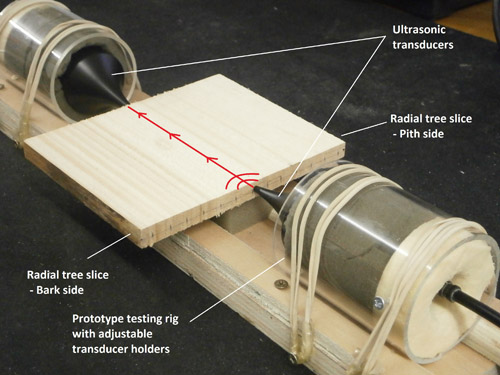
Figure 1. Our basic prototype testing rig applying a signalling and receiving transducer to a radial slice of a tree. An ultrasonic pulse is sent along the longitudinal axis of the wood and detected at the opposite end to measure the speed of sound.
2019 update:
Moving forward from the rudimentary rig (shown in the picture above) which was used to establish a proof of concept, we are finally in the process of automating our ultrasonic instruments. We are developing an electronically controlled frame in-house which holds, moves and tests full-diameter samples with operators only required to load the sample and press go. We have developed control software for the system and are currently integrating lots of moving components. A working machine is expected in January 2020… so watch this space!
Early results
As expected by theory, results indicate that stiffness data obtained from ultrasonic testing show a strong correlation with that those derived from traditional mechanical testing across a range of conifer species.
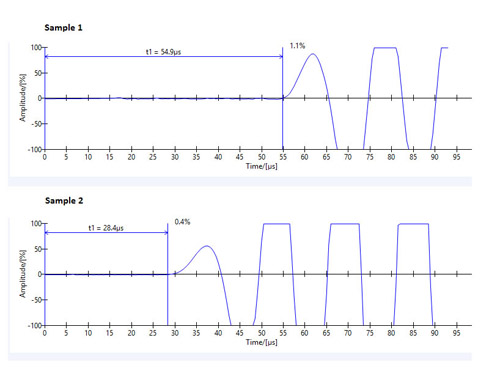
Figure 2. Sound waves detected on two wood samples of identical length. The shorter arrival time of sample 2 equates to a faster speed of sound and a stiffer section of wood.
Crucially for us, the results to date suggest that data produced using ultrasonic testing is suitable for use in comparative studies of wood stiffness between groups of trees (i.e. stands, sites or species) and between individual trees. Comparative analyses produce very similar results to analyses based on traditional mechanical testing. We will continue to validate this approach for the range of material that we are testing and improve on the practical application of the testing on mass.
Status
Current (2015-2020)
Related Products/Services
Wood strength and stiffness measurement
Related Resources
Managing for Timber Quality Decision Support System
Contact
Funders and partners
The project is co-funded by FC Scotland (now Scottish Forestry), FC England and Natural Resources Wales, via the Forest Products Research Programme (Wood and Timber Properties).
Forestry Commission policy
This work will support:
FC Scotland policy: The Scottish timber industry and Scotland’s timber resources, particularly via The timber development programme
FC England policy: Protecting, improving and expanding England’s woodland resource
Welsh Government policy: Woodlands for Wales
Related pages
Tree stem assessments
Since stem size and shape are key determinants of tree stability, timber quality and timber volume recovery, refining and developing techniques for various tree stem assessments is a key aspect of our research.
Research Objectives
The shape of trees is very important in determining timber volume recovery and hence value. The shape of trees is also an important component of their stability in wind. Branch architecture is indicative of the knot content of that timber. Knots are generally detrimental to sawn wood forest products and affect usability and value. Therefore, measuring tree shape and branch architecture has application in stand evaluation, risk assessment and timber value. Many of the current techniques are subjective (i.e. the results depend on the individual assessor) and new digital methods offer the potential to improve on this and increase measurement efficiency. We aim to investigate how these new technologies can help in tree stem assessments.
Latest Updates
Stem straightness
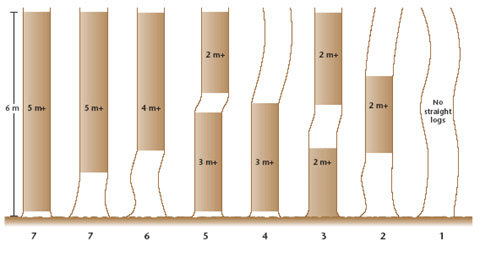
Stem straightness is the major determinant of sawlog value. Straighter stems provide more processing options and higher sawn wood recovery. Effective assessment techniques enable better quality stands or trees to be identified during timber cruises and marketed to specific processor requirements, optimising the use of forests and adding value for all. Assessing straightness during inventory measurements would enable more detailed production forecasting. For tree breeding and inventory purposes we use an established straightness scoring system based on visual assessment of straight log lengths in the lower 6 m of standing trees. This can be used to determine a stand straightness grade that projects a likely log assortment. While this system works in principle, it is strongly dependent on the person who does the assessments.

We are continually developing photographic and terrestrial laser scanning techniques to measure straightness.
Technical Note: Assessing the stem straightness of trees.
Stem Taper
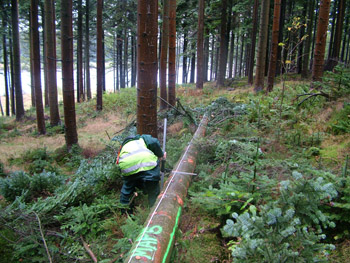
Put simply stem taper describes the relationship of tree height to diameter. However trees are not conical and the relationship between height and diameter is not constant along the tree stem. We build and develop mathematical functions that describe the shape of tree stems for a range of species. Models are used to predict stem diameter at different heights and are an integral part of modern forest inventories and harvesting technologies. These taper functions are central to our ForestGALES wind-risk and Timber Quality decision support systems for forest managers. Traditionally we measure taper using callipers along the length of felled trees. However we are investigating the application of photogrammetry, terrestrial laser scanning and harvesting data to generate these functions on a regional level.
Branching
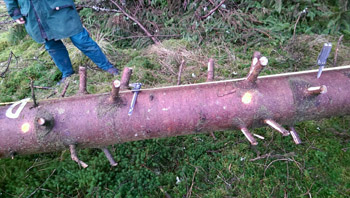
Branching habits are directly related to knot volume and geometry. We make detailed studies on the size, frequency and shape of branches on our most important tree species. Our most detailed studies typically involve the painstaking physical measurements of individual branches, including aspects such as size, age, insertion angle and living or dead. We then make models of branches for different species and under different forest management scenarios. We are also interested in how the depth of the living crown affects timber production. We are pursuing terrestrial laser scanning (LiDAR) techniques as a way to non-destructively assess branches and we are interested in how we can link remote sensing, e.g. airborne LiDAR to branching habits and timber properties.
Related Resources
Information Note:
Protocol for Stem Straightness Assessment in Sitka spruce
Information Note:
Timber Quality, a Pilot Study for Assessing Stem Straightness
Research Note:
Developing Methods for Assessing Scots Pine Timber Quality
Article:
Taper functions for Scots pine and Sitka spruce in Northern Britain
Tree & Wood Properties Testing Equipment & Facilities
Acoustic (stress wave) velocity
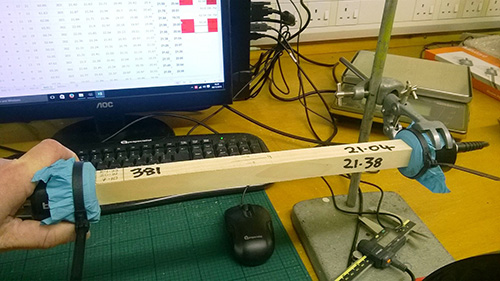
Acoustic tools are a non-destructive method of predicting the stiffness of materials. They work by measuring the propagation of stress waves through wood, either by time-of-flight (over a fixed distance) or via resonance (vibration at the wood’s natural frequency). Specific tools using these technologies have been developed for forestry and wood processing applications. We use tools designed for standing trees, felled logs and sawn timber of a range of sizes.
Measurements on standing trees are desirable as they offer early screening of wood stiffness; unfortunately they are also the least reliable as only the time of flight method can be used. There are questions about the path of the stress wave meaning the velocity is ambiguous. This is particularly true at the tree level. We are working on ways to improve the reliability of these measurements. Measurements on logs and sawn wood are more reliable because the path is more certain, or the more reliable resonance methods can be used. Resonant instruments are sufficiently accurate to grade structural timber.
- Forestry Commission Technical Note: Using Acoustic Tools in Forestry & the Wood Supply Chain
- Forestry Commission Research Note: Developing Methods for Assessing Scots Pine Timber Quality
Airborne laser scanning (LiDAR) and photogrammetry
Airborne LiDAR can provide forest resource information on tree heights, crown width, number of trees, stand volume, and forest biomass. We are evaluating the potential for using data obtained from sensors mounted on Unmanned Aerial Vehicles (UAVs) to assess timber properties.
Kiln for timber drying
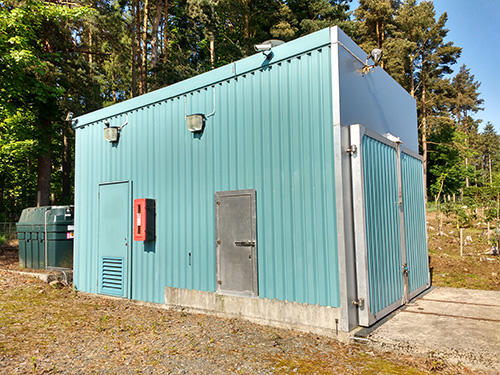
The Tree & Wood Properties group have a small kiln at the Forest Research Northern Research Station. The kiln is a scaled-down version of those found at modern sawmills and is suitable for replicating industrial kilning on small batches of timber, so it is ideal for research projects! The kiln is used for the drying of 3 m batons used in large scale mechanical testing in many of our studies, in collaboration with Edinburgh Napier University. The kiln is capable or drying timber up to 3.1 m length and stacks of approximately 1 m wide by 2 m high. It is fully kitted with temperature (dry and wet bulb), relative humidity and wood moisture content sensors. Drying schedules can be programmed according to prefixed schedules by species or custom to user requirements using the dedicated control computer.
Magnetic resonance imaging (MRI)
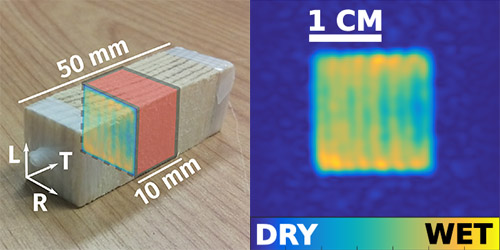
Magnetic resonance imaging (MRI) is a non-destructive technique that can locate hydrogen atoms within a material. This makes it particularly useful for studying internal water without damaging the sample. MRI is commonly used in hospitals for medical imaging of soft tissue, but is also a valuable tool for studying a wide range of other biological and non-biological materials. In a forestry context the sensitivity of MRI to water makes it the best method of measuring moisture inside trees and felled timber. These measurements provide that can help us understand processes such as timber drying, sap flow, the effects of drought, and injury response in trees.
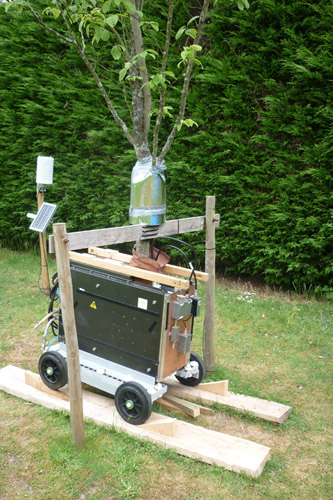
Forest Research has been collaborating with the University of Surrey Soft Matter Group on magnetic resonance imaging of wood and trees since 2005. This collaboration has resulted in one of the few MRI systems in the world designed for in-situ imaging of living trees – the Treehugger – which is currently based at our Northern Research Station in Roslin
Wood strength, stiffness and density measurement
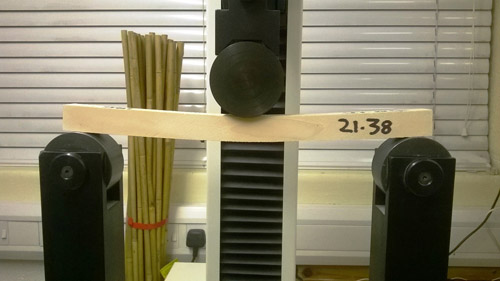
The suitability of timber for structural purposes is jointly determined by its bending stiffness, bending strength and density. These three properties are considered and tested under Forest Research’s Tree and Wood Properties programme.
Density is determined from measured mass and volume. We use destructive testing to determine both stiffness and strength using a bench top 3-point bending machine and we have an environmental conditioning chamber to ensure that the moisture content of the wood is adjusted relative to the purpose of the test Small samples (20x20x300 mm) of clear wood are typically tested.
Terrestrial laser scanning (TLS)
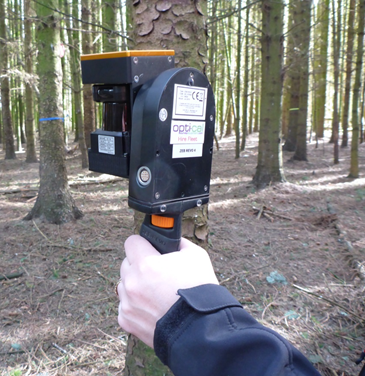
Terrestrial Laser Scanning can potentially be used to make stand-level assessments of tree numbers, diameters, crown shape, stem profiles and stem and branch quality related attributes. We are actively investigating the potential applications and limitations of hand-held scanners and the combination of data obtained from these TLS devices and airborne devices in production forestry.
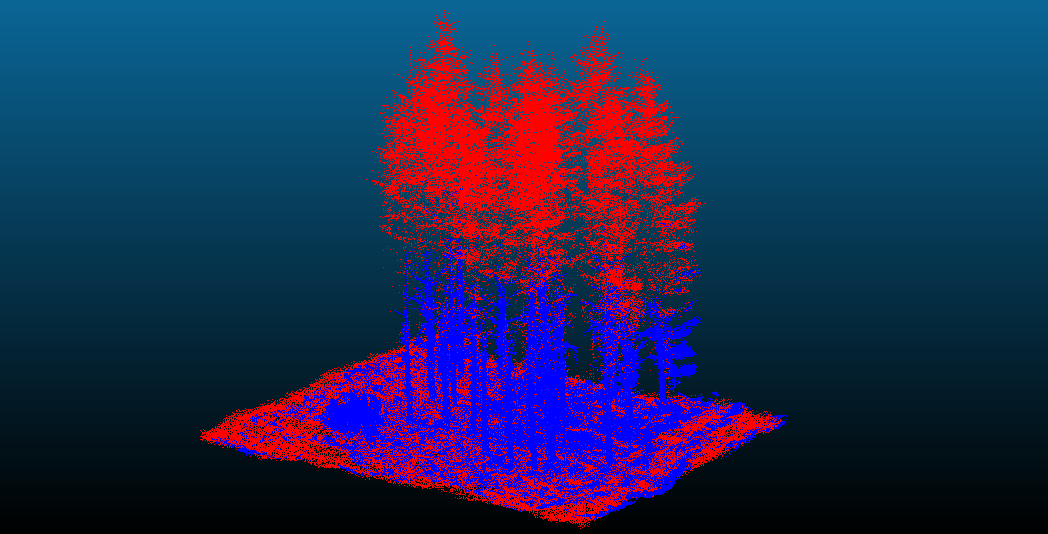
X-ray densitometry
We use X-ray densitometry to measure the density and width of individual tree rings. This provides information about the tree and how it has been affected by its immediate environment. Wood density also has a very important impact on how we use trees. Studying growth rings therefore allows us to assess the past influences of forest management and climate, for example, on tree growth. X-ray densitometry allows us to measure density on a much higher spatial resolution than is feasible by other means.
Forest Research has a batch scanning X-ray densitometer specifically made for wood samples. We can produce radiographs with a maximum 25 micron spatial resolution. From these radiographs we can extract information about tree growth and timber properties. We can measure growth rings on cores taken from trees or radial sections prepared from discs.
The Itrax Multiscanner
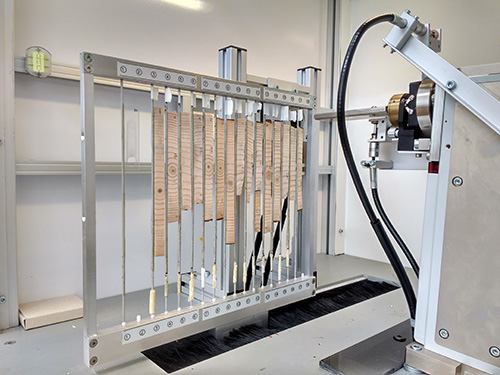
Up to 15 wood samples can be measured in a single batch according to a user-defined path. Samples are scanned with a fine x-ray beam to produce a density image, in which each pixel has a defined density value.
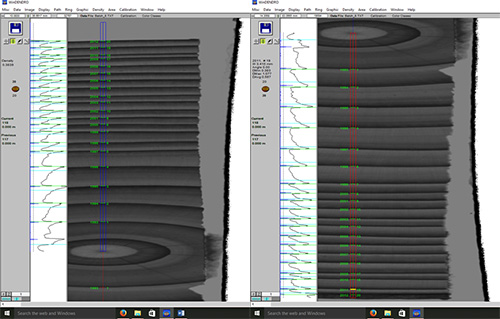
Calibrated radiographs viewed with image analysis software and used to measure both growth ring width (blue and red bands) and within-ring wood density the charts to the left of each image are density profiles).
